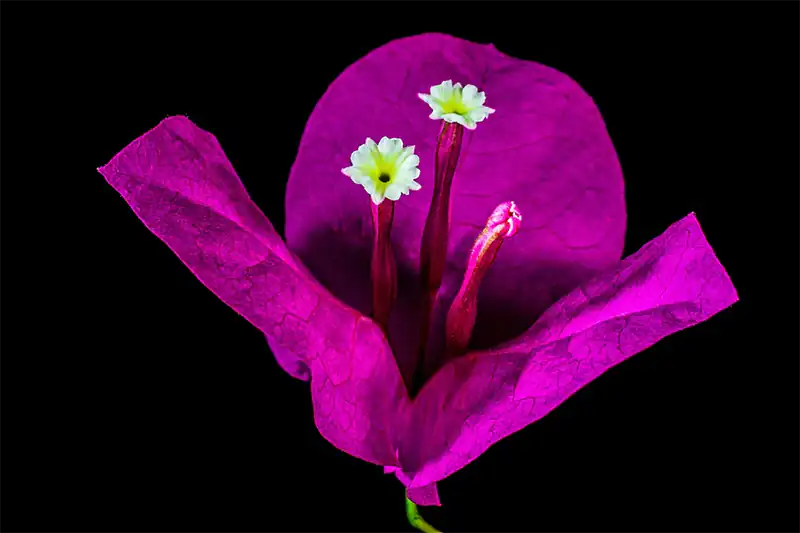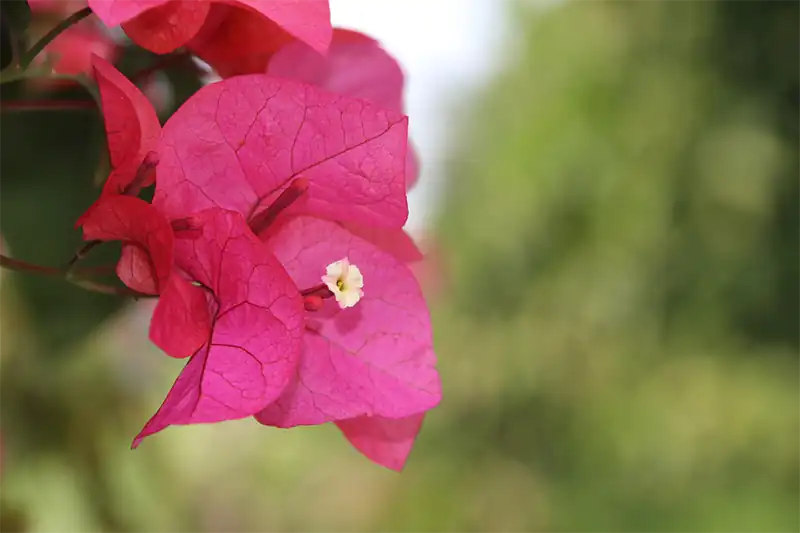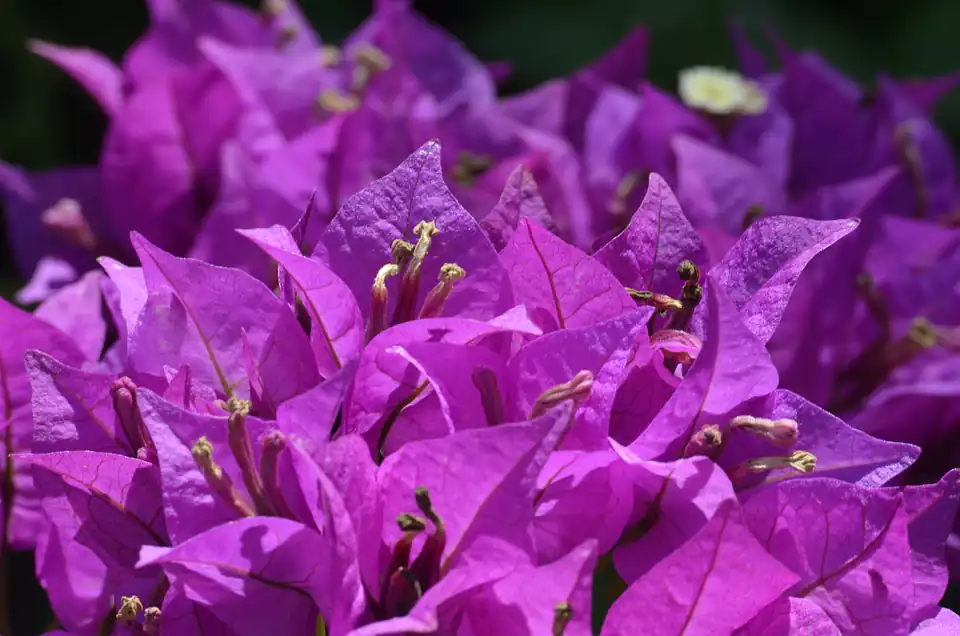Bougainvillea Scientific Classification
This bonsai is incredibly gorgeous when it flowers, showing off its stunning bracts with the small flowers held within them. One aspect we’ve come across that our readers want to know about is what the Bougainvillea scientific classification is.
We don’t blame them! There’s a mix of clades, tribes, families, and orders that are interesting to read about, showing you how they relate to other trees and plants.
Here are the topics we’ll cover:
Here are the topics we’ll cover:
01
02
03
04
05
06
07
08
09
10
Bougainvillea Scientific Classification
Before we go ahead and break down each section, here’s a quick overview of the Bougainvillea scientific classification as we know it today.
Kindom
Plantae
Clade
Angiosperms
Clade
Eudicots
Order:
Caryophyllales
Family
Nyctaginaceae
Tribe
Bougainvilleeae
Genus
Bougainvillea
Where Does the Name Bougainvillea come from?
In the late 1780s, Louis Antoine de Bougainville was a French Navy admiral who was traveling around the globe. Joining him on the journey was Philibert Commerçon, who was a botanist. Also hiding on the ship dressed as a man was Jeanne Baret, who was also a botanist. She wanted to be the first woman to circumvent earth, but only men were allowed on the ships at that time.
Many believe it was Baret who first spotted the shrub, while Philibert Commerçon was the first to describe it. Naming it after the admiral, the name Buginvillæa appeared in 1789 when it was published by Antoine Laurent de Jussieu. It would receive many names over the centuries until it settled on Bougainvillea in the 1930s.
While botanists realized that the glabra and spectabilis were not the same in the 1980s, the Bougainvillea had already begun to receive widespread recognition. It spread to Europe before France and Britain brought them to several colonies they had worldwide. It was through this distribution that it reached Australia.
Of course, many of the species have the label ‘paperflower’ attached to them. The main reason is for the papery bracts found around the tiny flowers, which is what gives a spectacular show on trees and bonsais.
The Bougainvillea is an Angiosperm
The plant kingdom has two main distinctions: Angiosperms and Gymnosperms. The name ‘Angiosperm’ means ‘plant that produces enclosed seeds’, or fruiting plants, if you will. They primarily differ from gymnosperms in that they produce flowers that become fruit with a seed inside.
Within this division is Mesangiospermae, which is also known as core angiosperms. You’ll find about 350,000 species in this grouping alone and hold about 99.95% of all flowering plants. Their cousins are called the basal angiosperms, which consist of Amborellales, Austrobaileyales, and Nymphaeales.
The Eudicots
The Bougainvillea scientific classification includes eudicots. To get a better understanding of the taxonomy, the core angiosperms consist of five main clades:
- Eudicots
- Monocots
- Magnoliidae
- Ceratophyllales
- Chloranthales
What sets eudicots apart from the others is that they sprout two first leaves when they germinate, otherwise known as dicotyledons or false leaves. This term first appeared in 1991 after it was called non-magnoliids or tricolplates for so long. Popular plants that fall in this clade include food plants, ornamentals, and trees.
As with the angiosperms, you get basal and core eudicots. Bougainvilla falls with the latter with its scientific classification. To further understand the relationship down the taxonomy tree, core eudicots have two clades named Superasterids and Superrosids. We need to delve into the Superasterids towards the wonderful genus.
An Order of Caryophyllales
The Superasterids have about 20 orders within them, taking the name from the Asterids class. To show you have vast it is, there are 146 families altogether that are distant cousins of the Bougainvillea. Of all of these groupings, we need to head into the Caryophyllales order.
You may recognize some of the families that belong in this order, namely, carnations, cacti, ice plants, beets, amaranths, and carnivore plants. They have 37 families that contain over 11,000 species of flowering plants. What makes this clade unique is that it has betalain pigments, which is what gives the petals such vibrant colors.
To take it a step further, there are two sub-orders: Polygonineae and Caryophyllineae. The latter contains 21 of the 37 families, and there are about 8,600 species. It’s also known as the core Caryophyllales, and these are the aspects that set them apart from the non-core Caryophyllales or Polygonineae:
- Phloem sieve tubes that have peripheral rings containing proteinaceous filaments
- The betalains pigment
- Single whorl tepals
- Pollen that has tubiliferous/punctuate exine and spinulose
- Perisperm where the endosperm may be lacking
The Nyctaginaceae Family
You may know this family better as the Four O’Clock family. There are 33 genera within it, with only 290 species, which shows you the low percentage within eudicots and Caryophyllales. They mostly endure in tropical and sub-tropical climates, but you may find some in temperate regions. Most of all, they enjoy loads of sunlight and water.
Two aspects set this family apart from others in the Caryophyllales order. They have a unique fruit called an anthrocarp, and there are massive pollen grains compared to other flowering plants. Some of the genera have sticky bands between nods, while others pollinate themselves without even opening the flowers.
Head of the Bougainvilleeae Tribe
Before we head into the main section of the Bougainvillea scientific classification, we need to mention that it has its own tribe. Besides its genus, the other two genera include Belemia and Phaeoptilum. What makes them interesting is that they each only have one species, namely, Belemia fucsioides and Phaeoptilum spinosum/ Brittle Thorn.
Bougainvillea as a Genus
And now for the main course of this delectable biological journey. The Bougainvillea is well-known for its colorful bracts that are often mistaken for flowers. It uses these mutant leaves to attract hummingbirds, butterflies, and moths, sharing a special relationship with them.
The genus is native to South America. Botanists and authors often disagree on the number of species, running anywhere from 4 to 18. When you consider the number of species in eudicots, it’s a tiny amount.
That doesn’t mean your bonsai will be small. While each species differs, a Bougainvillea vine in the wild can grow up to 39 ft. if left unattended. What also makes them incredibly is that they can be deciduous if there’s a dry climate, while you’ll see evergreen features it if receives rain for most of the year.
Common Bougainvillea Species
Let’s speak about the species for a moment. While many authors have noted up to 18 species, only four of these are officially recognized and can be grown as bonsais. These are:
- spectabilis
- glabra
- peruviana
- rosenka
Of all of these, B. spectabilis is the one you’ll mostly commonly find in stores as a bonsai. Each one has different floral and foliage designs and colors. They also reach different heights, and you can only find some of them in specific countries. We’ll discuss the details of these species in a different article.
Final Words
While we’re sure many of you are more interested in the appearance than the scientific classification of Bougainvilleas, we found it enjoyable to share it with you. It gives you a clearer picture of where it fits into the great scheme of things, and may even make you feel closer to your bonsai tree.
Did you enjoy our scientific approach to this gorgeous tree? Did it help you in some way understand it better? Let us know in the comments, and we’ll be sure to share more of these.







